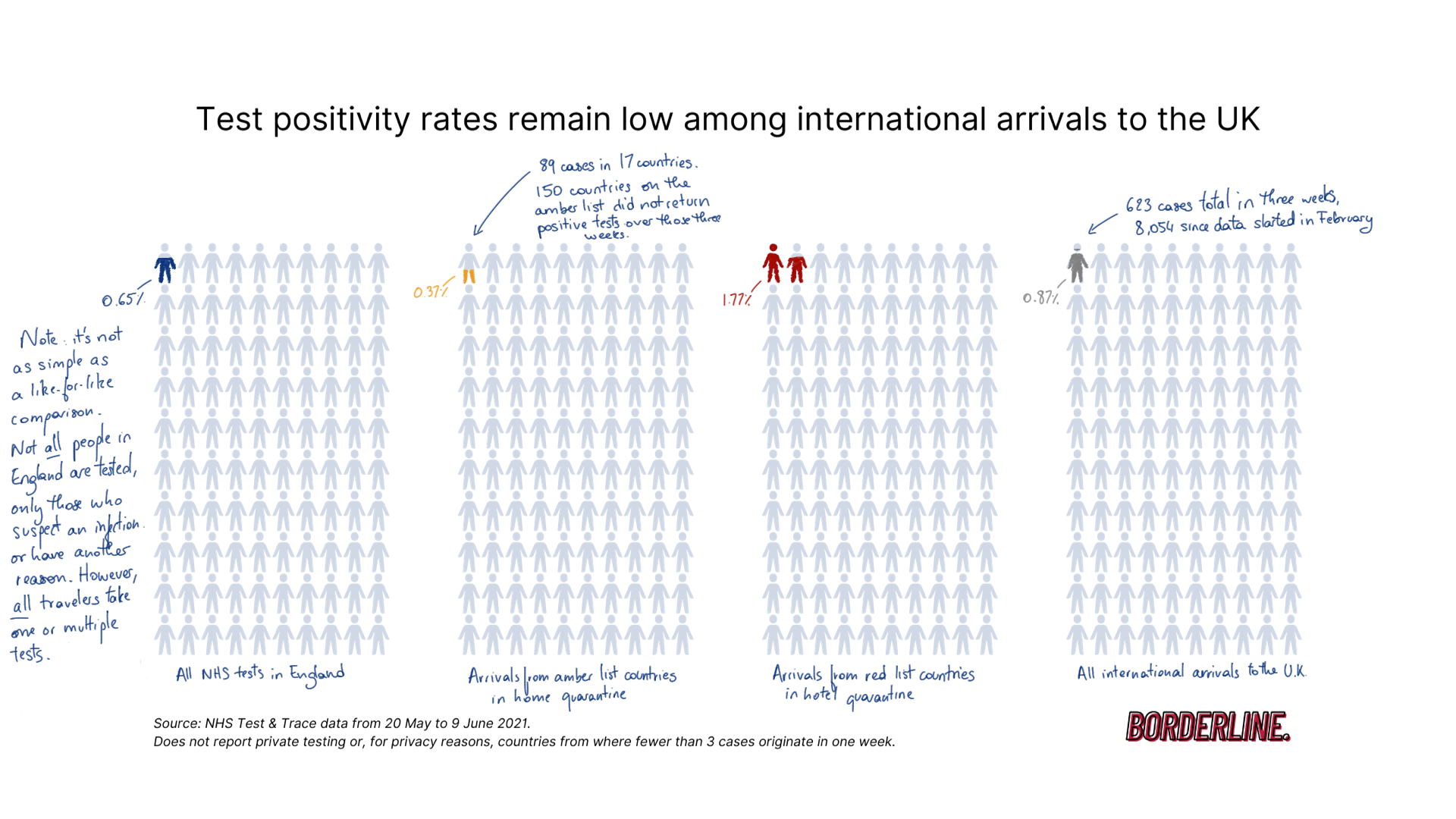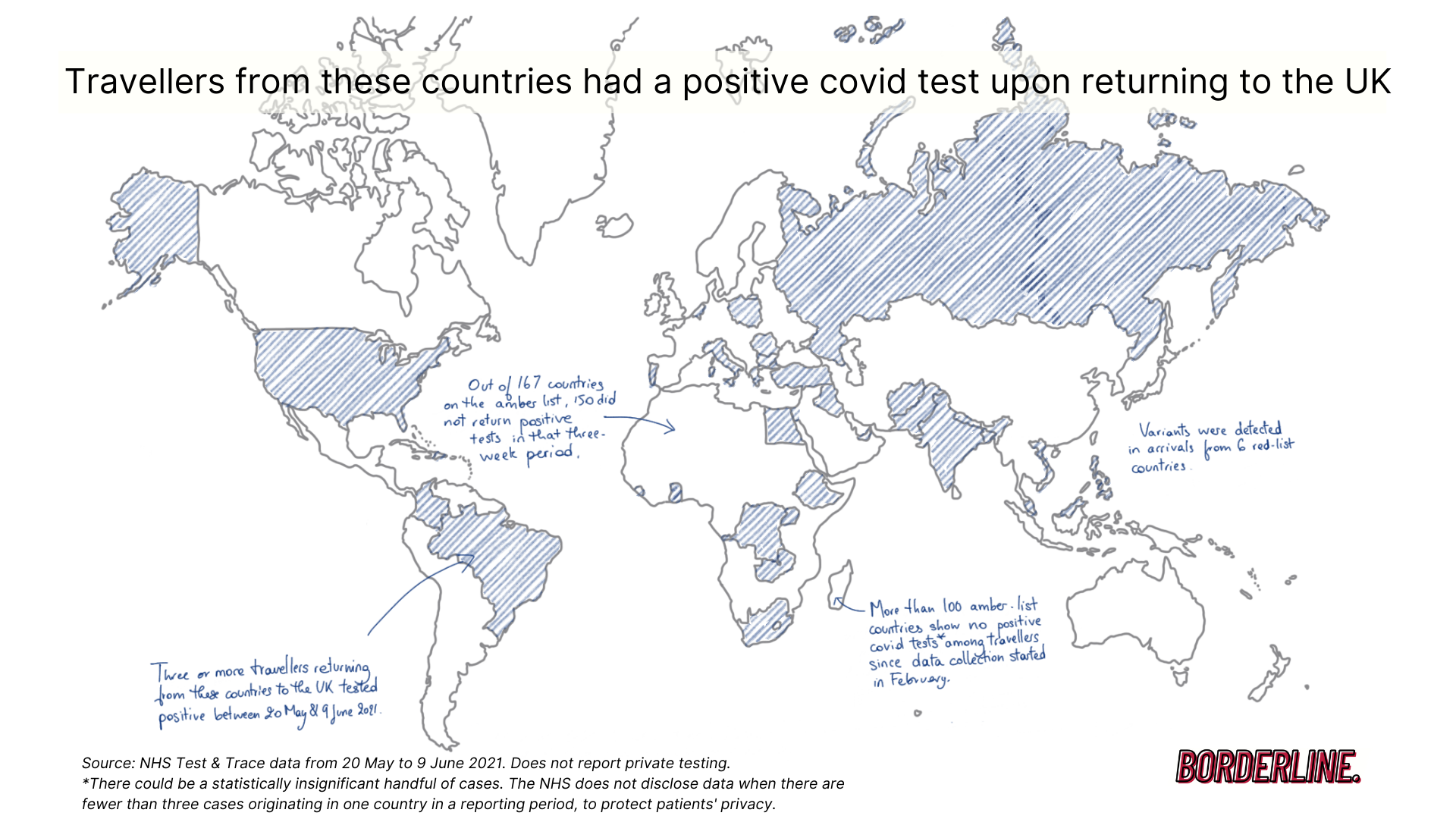
Is travel from amber list countries dangerous? A look at the data.
Are travel restrictions commensurate with the public health risk? Or are they a mildly xenophobic bit of security theatre?
"It's going to be, no matter what, a difficult year for travel," Boris Johnson said on Monday. You might have noticed already. In fact, 2021 is proving much harder than even 2020 for people wishing to travel out of the UK. A chorus of voices is rising against the British government's restrictions. The travel industry is planning protests in Westminster on Wednesday. The next review of the travel light system is planned on 28 June, but some media have now been briefed that changes would be announced on Thursday. Pressure is on to at a minimum remove quarantine requirements for fully vaccinated travellers and perhaps move many more countries from amber to green.
Are current testing and quarantine rules commensurate with the public health risks posed by international travel? Or are they a mildly xenophobic bit of security theatre? I took a look at the data.
Most international destinations are on an amber list meant to discourage travel. Arrivals from these 167 countries must quarantine at home for 10 days and take covid tests on days 2 and 8 of their return, as well as day 5 if they wish to shorten their quarantine. For this they are not afforded free NHS testing. The packages cost upwards of £200 per person, on top of pre-departure tests required by destination countries and the opportunity cost of quarantine for those who cannot work from home. What do those tests tell us?

First, red-list countries are red for a reason: their test positivity rate is nearly 3x the English average. But amber list countries have a rate of just 0.37% lately, nearly half the rate for all of England, which is 0.65%. The average positivity rate for all international arrivals, significantly raised by red-list countries, is a bit higher than in the general population, at 0.87%.
(Methodology note: We're looking at a three-week period from 20 May to 9 June, the latest available data from NHS Test & Trace. Private testing is not included, nor instances where only one or two arrival from a single country test positive in a week. But this is the data we have and what the government is looking at.)
A caveat: Not everyone in England gets tested. Only those who are contact cases, have symptoms or otherwise suspect an infection go for a PCR test. On the other hand, everyone who travels does get tested, even when there is no clinical concern. That should reasonably dilute the positivity rate. That's the issue here though: travel itself essentially makes you a contact case in the eyes of the law.
Overall, the data does not show a significant risk among arrivals from amber list countries. It gets more interesting when you plot it on a map.

Of nearly 24,000 travelers arriving from amber list countries in those three weeks, 89 tested positive. They came from just 17 countries. (There were a further 435 cases from 16 red-list countries.) That means 150 countries on the amber list did not return any covid-positive travelers to the UK over that period. In fact, more than 100 countries on the amber list have never returned a covid-infected traveller since monitoring started in February.
But variants, you ask? None were detected from amber-list countries over the period. A few patients tested positive for variants in hotel quarantine, coming from six red-list countries: India, Pakistan, Bangladesh, Egypt, the UAE and the Philippines.
So why is the government being so prudent, even "ludicrously cautious" in the words of the British Airline Pilots Association? Mandatory testing enables monitoring and restrictions keep the numbers manageable. It's a boon to public health watchers. Meanwhile, quarantining reduces the risk to near zero. After the heat 10 Downing Street took over not placing India on the red list sooner, it's not keen to let in another potential variant. Opening the floodgates does pose an unquantifiable risk.
There is a political advantage here too. "We have one of the tightest border control systems in the world," Matt Hancock was keen to remind us today. Travel restrictions, immigration controls and intransigeance with the EU get jumbled together in the same discourse, whispered softly in the ear of the more right-wing electorate. "Aren't we cozy behind our walls?" it says. Domestic holidays have become a patriotic bona fide and nevermind if only the wealthiest families can afford them. Even among the more liberal, an idea has taken hold: we could be completely free at home if only we pulled up the drawbridge. The Labour Party wants the amber list scrapped – in favour of stricter controls!
But the current surge puts the lie to this idea and the collateral damage is starting to pile up, perhaps enough that Number 10 will have to loosen the rules. The travel industry is pissed. According to air traffic control agency Eurocontrol, flights in and out of the UK are down 72% from 2019. Only Ireland fares worse. Meanwhile, millions of people have now been separated from their loved ones and their lives abroad for months or years. From university students abroad to immigrant families, from pensioners in Spain to second-home owners in France, this group is too large to imagine there aren't some in it who are Tory voters.
Fleeing the country en masse in summer is as British a tradition as football. After five years here, I'm starting to understand why. It's the weather. It's the outrageous cost of domestic holidays. It's the one in seven people in Britain who are born abroad. It's perhaps that travel is an essential part of the human experience and resuming it is no more frivolous than returning to theatres or restaurants.
Hey, you read to the end!
Don’t miss future articles like this one; let me into your inbox.







